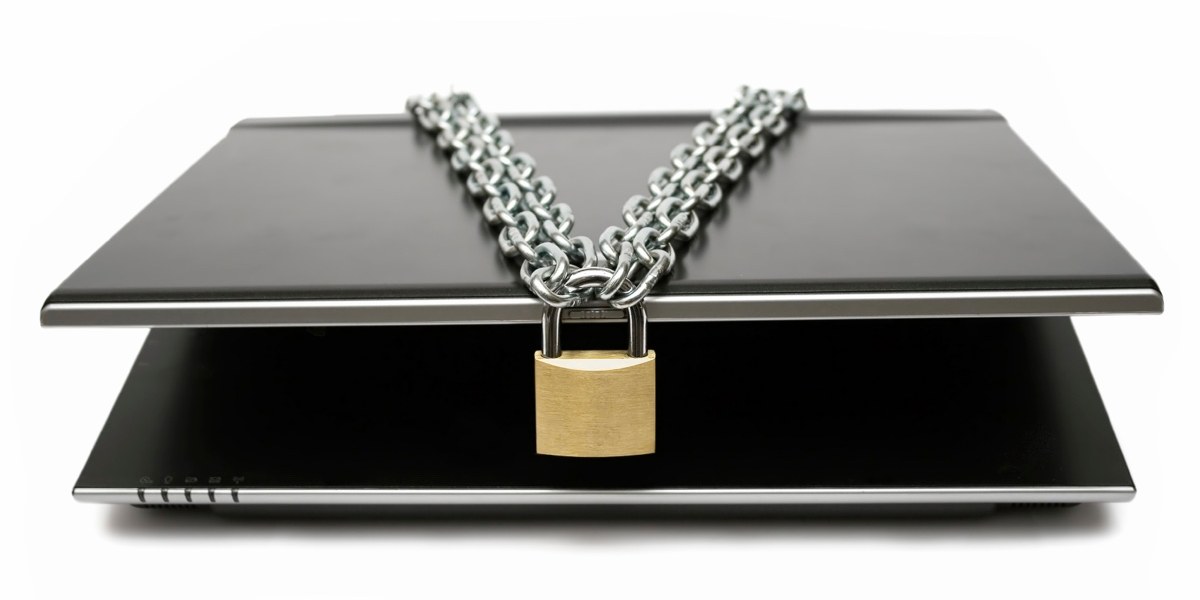It’s a concept nearly as old as written communication itself, dating back to Ancient Egypt. Now, this age-old idea keeps us safe in nearly every aspect of our online lives.
What is encryption? Put simply, it’s a way to keep prying eyes off your data. When using your credit card to shop online, your computer encrypts your information and makes it unreadable to anyone who might intercept the transfer. Once your information gets to its intended recipient, it can then be decoded and viewed as normal. Only those with the ‘key to the code’ are able to make sense of the transmission.
You can apply encryption to almost everything in your digital life, from securing your files with passwords, to encrypting emails, securing your cloud storage and beyond. In this post, we’ll look at the ins and outs of encrypting your computer’s hard drive, and why you might consider turning your computer into a digital Fort Knox.

Road warriors take heed: your Windows or OS X login password isn’t enough to secure your data. Should your laptop ever be stolen, thieves can simply remove your computer’s disk, connect it to another computer and gain instant access to your information.
If you have sensitive information on your laptop, disk encryption is a great idea. Check out our steps below for enabling it on your laptop.
Windows
If you’re running Windows 8 Pro or 8.1 Pro, you’re in luck. These versions of Windows come with Microsoft’s BitLocker, a free and simple way to encrypt your disk. Windows 7 and Vista users with Ultimate or Enterprise editions also get BitLocker.
For Windows users who miss out on BitLocker, there are plenty of other options. Many enterprise-level encryption utilities exist, with major vendors such as Symantec, Sophos, McAfee and Check Point all offering quality disk encryption software.
For home users and small businesses, DiskCryptor is a free alternative, allowing you to encrypt your drive without paying for a proprietary solution.
Mac
Mac users on OS X Lion (10.7) or later have an excellent built-in encryption facility with FileVault 2, included with the OS. It uses a type of encryption used by the National Security Agency, so you can be sure it’s robust enough for everyday use.
Since Apple included FileVault 2 in OS X, third party options for whole-disk encryption on Mac have pretty much dried up. Symantec and Check Point offer enterprise-grade options, but for individuals and small businesses it’s pretty much FileVault 2 or nothing. Luckily, FileVault 2 is very good.
The Drawbacks
Full disk encryption is not without its cons to consider. If you ever experience hard drive corruption or damage, having an encrypted drive can make recovering your data difficult or impossible. If you’re opting to encrypt your full drive, regular backups are essential.
A happy middle ground could be simply to encrypt only your sensitive files, rather than the entire drive. This solution is less secure, but for the average user, it can provide a great balance of security and usability without the risks of full encryption. Check out our guide to encrypting sensitive files and folders.
However, if you travel frequently with your laptop, store sensitive data, or run a business from home, full disk encryption offers a secure, ‘set it and forget it’ option for protecting your data.
